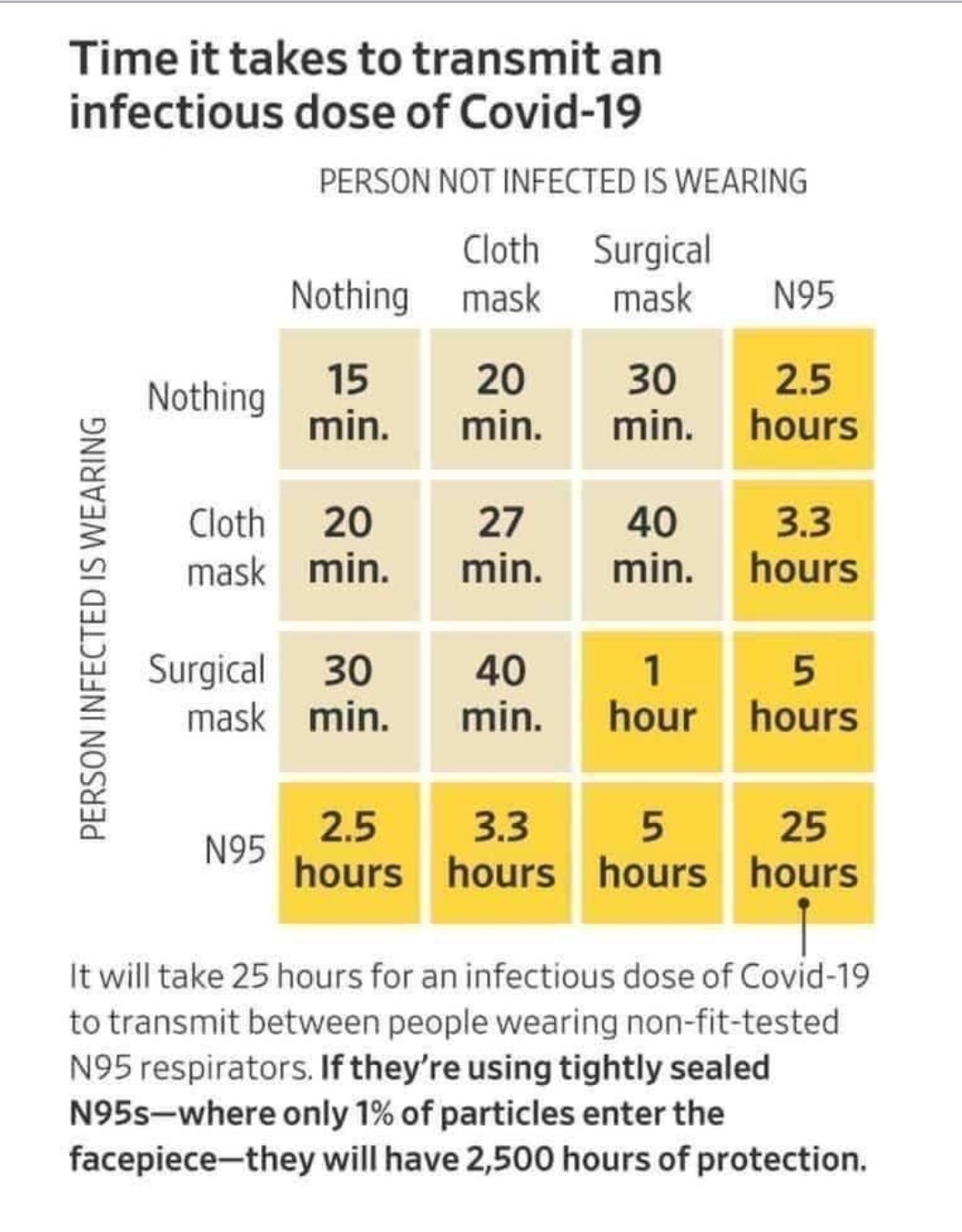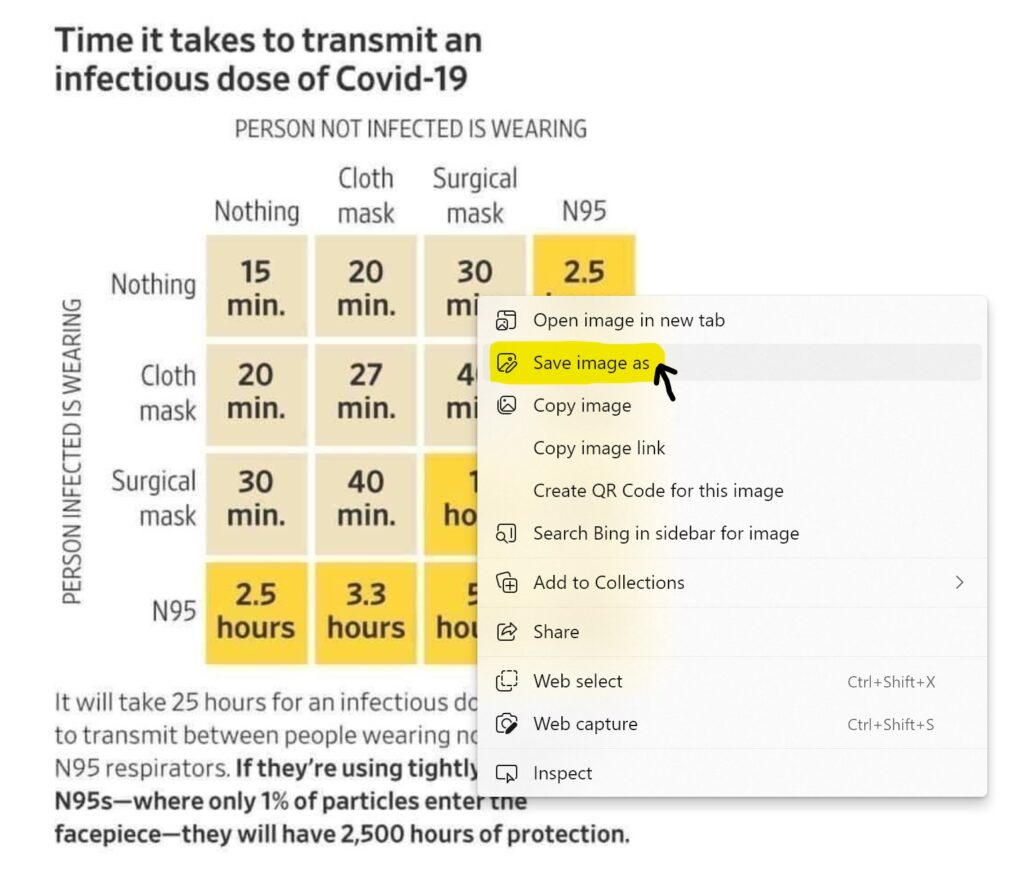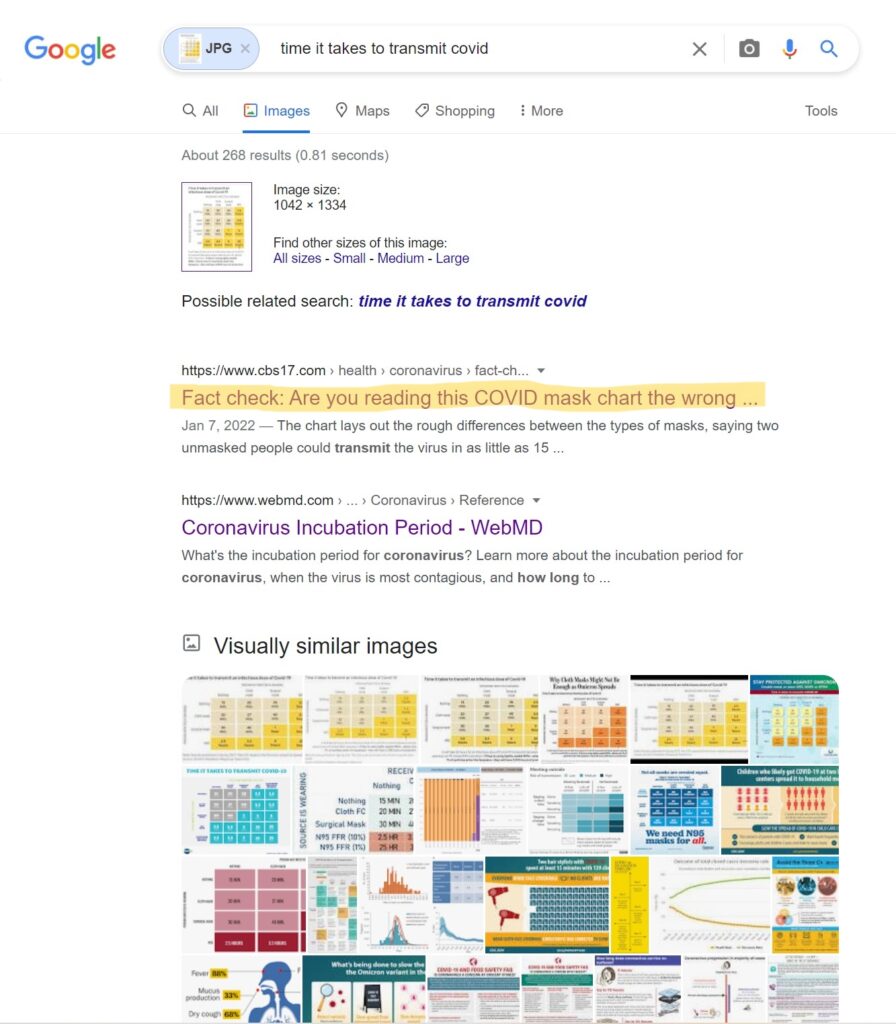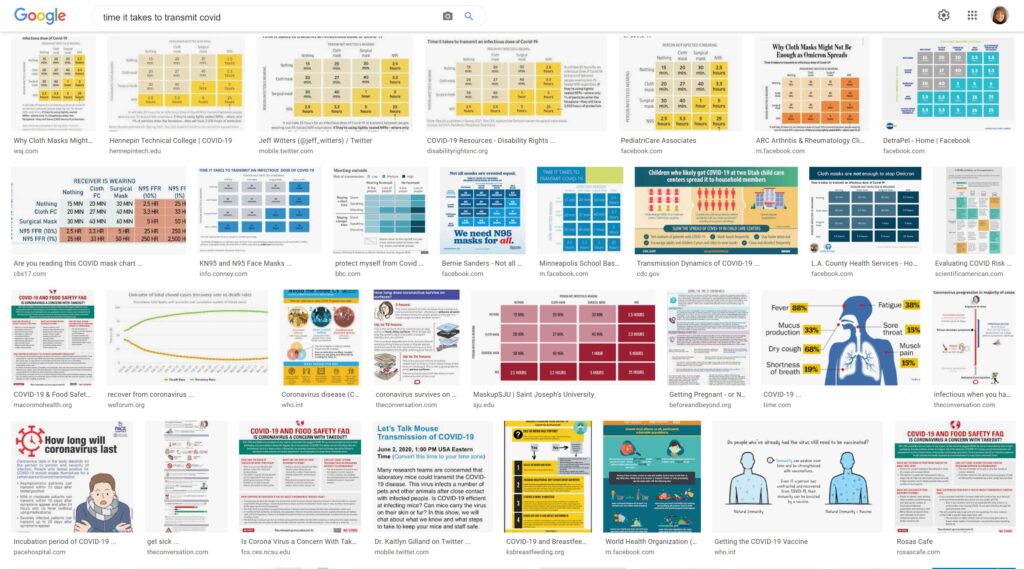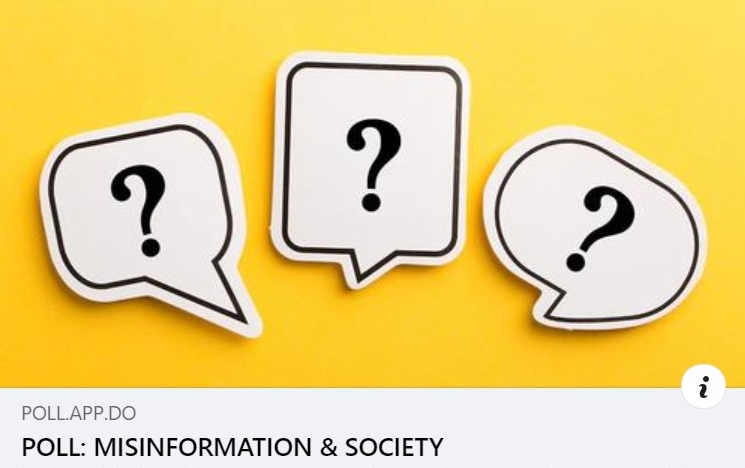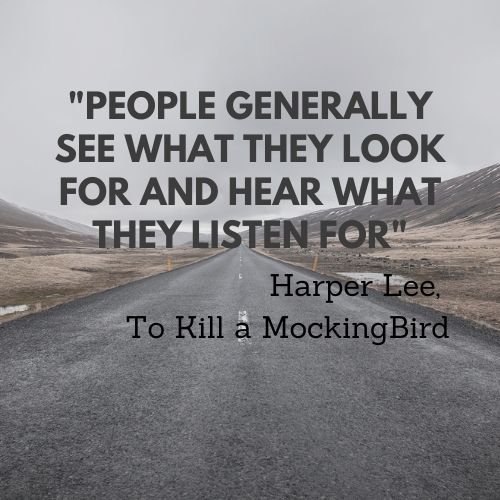The capability of the internet blows my mind. Just when I thought I figured out how to do a proper web search to find exactly what I am looking for, I get asked: “How do you find out if an image or video on social media is real?” Great question and the answer is, I do not know exactly. I had learned about reverse image internet searches. I thought a reverse image search only provided where the image was posted on the internet. I was unsure whether that type of search would give me fact-checking results.
I cheerfully accepted the challenge of learning how to determine an image’s credibility. I used the image featured above as my muse. I chose this image because I honestly thought it was fake at first sight. Then I looked at it closer and thought, maybe this chart is legit. What made me think it was real was the stated contact time for virus infection. I began to doubt the information on the image at the 25-hour length of protection while wearing an N95 mask. My doubt was not of their protection but the efficacy of these masks over the stated 25-hours.
I had the assumption N95 masks are to be discarded after 12 hours of use. I have no idea where I got that impression, but this recall led me to doubt the image’s validity. N95 masks are around 95% effective in filtering virus particles. However, these types of masks do have a shelf life. The efficacy is dependent on how the mask is cared for when not in use.
The CDC recommends N95 masks be discarded after 40 hours of wear for front-line workers in a hospital setting. For the general public, there is no clear time frame provided. People generally wear a mask during errands. The frequency of removing a mask in between errands compromises the mask’s integrity. When an N95 mask no longer fits snuggly or the straps break, the mask requires replacing.
Truth be told, I may be completely misinterpreting the information in the image, which is why researching an image’s validity is essential.
1. The first step I took to confirm the image’s validity was right-clicking on the image to download it to my computer. I clicked save image as and saved it to my pictures.
3. I then browsed the initial search results Google provided. The very first search result on Google was an article on whether the chart in the image searched was being read correctly. The search results indicated that the article was fact-checked for accuracy before the article’s title. The search result also provided visually similar images of my searched image. This Google feature is helpful to find the image’s origination and additional sources.
The “fact-checked” article provided that the chart in the image was designed by Dr. Lisa Brosseau, the former professor of the School of Public Health at the University of Illinois Chicago. She created the chart to assist front-line workers in remaining safe during the COVID-19 pandemic. Brosseau confirmed the chart was not meant to convey how long someone is “safe” around an infected individual. The image below is the original chart Brosseau designed for American Conference for Governmental Industrial Hygienists.

4. Lastly, I searched the “visually similar images” to find the origination of the image. The first image result was the same image as the one used for this blog post. The image is found in an article by The Wall Street Journal regarding the efficacy of cloth masks dated January 10, 2022. This article was published three days after the fact-checked article referenced above.
Similar images are found in two additional articles dated January 21, 2022, and February 1, 2022. The WSJ article appears to be the original publisher of the image and cited the ACGIH as the image source. It seems The WSJ used the information from the ACGIH website to create its own version of the original chart.
This image went viral on social media. The rest of the web search results are of social media posts containing the image. One post on Twitter, in particular, garnered 18.5k likes and 6,773 retweets. An image or video going viral on social media does not equate to credibility or lack thereof. For this reason, doing research is vital in preventing the spread of misinformation. My research of the image used in this post concluded the image is real and created from a credible source.
From start to finish, researching the image took 5 minutes tops. Once I hit search, the first article returned confirmed that the image was reliable. Looking at the “similar image” results only solidified that conclusion. After taking on this challenge to learn how to find out if an image posted on social media is real, I realized:
1. How quick and simple it is; and
2. Why verifying “something” is important
It is important because there are people out there who create fake images for nefarious reasons. One reason is to cause distrust in credible sources. Fake images are designed to invoke strong emotions that get people to share them. Pictures bring things to life, which is why people are inclined to believe an image. Thankfully the image I analyzed is genuine, but what if it was not. Fake images can cause great harm, which is why I encourage everyone to verify an image before you share it. It only takes minutes…promise.


